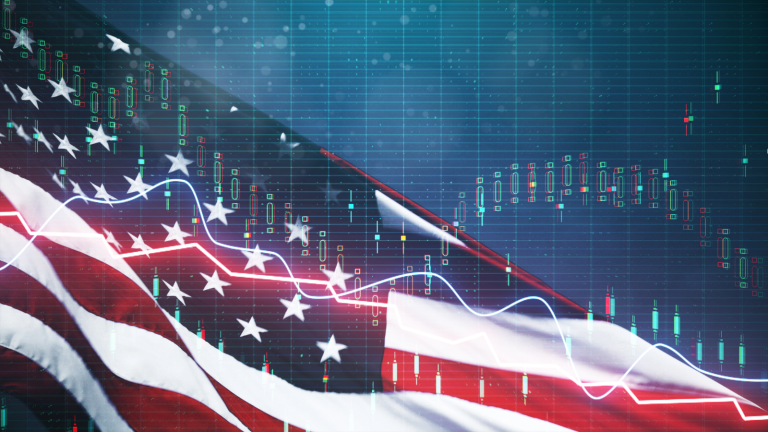As if Wall Street needed something else to worry about in 2025… now we face a “credit crunch.”
Lately, markets have been rattled by a spate of unsettling headlines. One regional bank, Zions Bancorporation (ZION), disclosed tens of millions in fraudulent loans. Another, Western Alliance (WAL), is suing a borrower over bad collateral. Subprime auto lender Tricolor went bust. Major auto parts supplier First Brands filed for bankruptcy.
All that in the past few weeks.
Cracks are clearly forming in the credit market.
These incidents, of course, spooked Wall Street. Folks are dusting off the old phrase, “credit cockroaches”; because if you see one, there are probably more. So, investors extrapolated. If regional banks and consumer credit are cracking, what does that mean for corporate credit? Commercial real estate? The broader economy?
Does it mean the great AI spending boom is about to hit a wall?
In short, we don’t think so.
In today’s issue of Hypergrowth Investing, we take a look at this credit pressure, why it’s unlikely to derail AI investment, and how the current bout of market choppiness is offering a textbook buying opportunity…
Why Credit Market Stress Won’t Derail AI’s Biggest Builders
The AI buildout is capital-intensive.
Data centers cost billions. Racks of Nvidia (NVDA) GPUs are sold in the tens of millions of dollars per shipment. Power and cooling infrastructure is so costly that utilities are having to rethink grid design.
A lot of smaller players – startups, specialized data center firms, second-tier cloud providers – have leaned on debt markets to fund that expansion. CoreWeave (CRWV), for instance, has raised billions of dollars in debt financing, and a meaningful portion of that is structured around its GPU inventory and long-term cloud/AI contracts as backing. For them, higher credit spreads or tighter bank lending could be a serious headwind.
But the hyperscalers – Microsoft (MSFT), Amazon (AMZN), Alphabet (GOOGL), Meta (META) – are driving 80- to 90% of the AI boom, putting them in a completely different category.
- Microsoft has over $80 billion in cash and generates $65- to $70 billion in free cash flow annually. That alone could fund multiple years of $30 billion-plus AI capex without borrowing a dime.
- Alphabet sits on $100 billion in cash with a net cash position (i.e., more cash than debt outstanding).
- Meta, after “year of efficiency” cost cuts, is throwing off $45 billion a year in free cash flow – plenty to build out LLaMA datacenters.
- Amazon Web Services is so cash-rich that its parent company is redirecting free cash from e-commerce into AI capex.
These balance sheets are fortresses. Higher interest rates or a credit crunch in autos won’t stop these companies. They don’t need to tap strained credit markets to fund their AI buildouts. They can self-fund.
That’s a key disconnect investors are missing: regional banks may wobble, but Big Tech’s cash piles make them largely immune to any credit squeeze.
AI Is Essential – Even in a Credit-Constrained Economy
When the economy slows, companies cut “nice-to-have” projects. AI is not in that bucket.
For Big Tech, AI is existential.
- Microsoft needs AI to keep its Office franchise sticky and fend off Google Workspace.
- Google needs AI to defend its search moat against ChatGPT-style assistants.
- Meta needs AI to improve ad targeting and power its vision of an “AI-first” social ecosystem.
- Amazon needs AI to optimize logistics, personalize retail, and keep AWS at the center of enterprise IT.
Cutting AI spend would be like an oil company deciding not to drill new wells. It’s the lifeblood of their future revenues.
That’s why – even in a world where some credit channels seize up –you won’t see hyperscalers pulling the plug on $10 billion datacenter clusters. At most, they’ll adjust the pace, staggering projects quarter to quarter. But the strategic imperative is too strong to stop.
For investors, that means the AI CapEx wave isn’t going away. If anything, it becomes more concentrated in the hands of the strongest players.
U.S. Policy Is Propping Up AI as the New Economic Engine
There’s another major reason AI investment won’t collapse: Washington sees it as a national priority.
The Trump administration has framed AI as a national security issue. Defense contracts, tax incentives, and public-private partnerships are already flowing. The White House has, for the first time in history, taken equity stakes in multiple AI companies such as MP Materials (MP), Lithium Americas (LAC), Trilogy Metals (TMQ), and Intel (INTC).
This White House is going all-in.
And that is because it views AI the way it once viewed railroads, interstate highways, and the internet: as critical infrastructure that underpins economic and military power. That means policy support will continue, even if consumer credit cracks or regional banks struggle.
In fact, one could argue that stress in “old economy” credit markets only reinforces AI’s relative importance. If commercial real estate (CRE) and autos are shrinking, policymakers have even more incentive to back the one sector delivering productivity and growth…
Credit Stress Hits the ‘Old Economy’; AI Powers the New One
We’re living in a bifurcated economy.
The AI Economy – Big Tech, semiconductors, data centers, robotics, software – is booming. The “Everything Else Economy” – regional banks, commercial landlords, auto suppliers – is stagnating under the weight of high interest rates.
Recent credit stress highlights the fragility of the “Everything Else Economy.” But that’s not where the AI boom lives.
Morgan Stanley forecasts that AI data center spending will exceed $500 billion this year – even as small-business hiring stagnates.
Nvidia is still expecting 50%-plus revenue growth despite fears of an AI “bubble.”
Microsoft, Google, Amazon, and Meta all reported strong AI-driven cloud demand in their recent earnings reports.
But the market tends to conflate the two. So, when credit cockroaches crawl out of Zions or Western Alliance, investors panic and sell everything, including AI winners.
History shows us that’s a mistake… and an opportunity:
- In 2010–11, debt ceiling and Eurozone debt panic drove down tech stocks – just before the mobile and cloud super-cycle.
- In 2018, Federal Reserve tightening fears sparked a 20% correction – right before the longest bull run in history.
Today, credit worries are shaking markets… just as the AI super-cycle is accelerating.
Consider some of these names on the drop:
- Nvidia: Still trading at under 40x forward earnings despite 50%-plus growth. Every data center order book is full through 2026. Any pullback is a gift.
- Microsoft: AI already flowing into Office and Azure, with gross margins stable. Fortress balance sheet. Stock trades at only ~30x forward earnings per share (EPS).
- Super Micro (SMCI): Volatile, yes – but with direct leverage to GPU servers, it remains one of the best “picks and shovels” plays.
- Amazon: AWS growth is re-accelerating on AI workloads. Stock has underperformed MSFT/GOOGL, leaving upside room.
These are the companies that benefit when AI capex continues regardless of credit noise.
The Smart Investor’s Play: Buy AI Strength Amid Credit Weakness
Yes, credit stress is real. Subprime autos, credit cards, and commercial real estate are under strain. Regional banks will see more pain.
But the AI boom doesn’t run through those channels. It runs through fortress balance sheets, strategic imperatives, and national policy support.
That’s why the AI Boom remains intact – and why recent market choppiness is less a warning sign than an invitation.
We’ve been handed a window to buy the future at a discount. Don’t let “credit cockroaches” in autos and CRE blind you to the bigger picture: the AI super-cycle is still accelerating.
While data center and software names have led the first leg of this boom, the next wave is happening in robotics: where AI is leaping off the screen and into the real world.
Factories, warehouses, and even hospitals are deploying intelligent machines powered by the same algorithms driving Big Tech’s profits. It’s the natural extension of the AI super-cycle – and it’s where we see the next 10x opportunity emerging.
Discover the top plays to stake an early claim in the AI-robotics boom.


